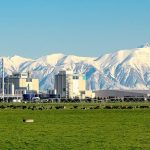
Speaking at the DairySA Central Conference in Tanunda on Thursday last week, Mr Harvey said it would likely take another month before the impact of coronavirus on the dairy industry was clear, but global market balances had shifted.
“We are seeing a short-term weakness in the price and the reality is the commodity market has fallen,” he said. “There has been a drop in retail demand, with retail sales disrupted and distribution networks shaken.
“We do know, after a year of strong imports, we are likely to see a contraction.”
But he said there were also positive signs after Starbucks initially closed a large number of its stores in China, some of which are starting to reopen.
He did caution the effects of coronavirus, combined with other international factors, may impact local prices.
“Don’t be surprised to see a conservative opening milk price, but it should get better to 2021,” he said.
Mr Harvey said there were positive signs in the industry, including a lower Australian dollar helping exports.
Despite a “structural resizing” of the milk pool in recent years, there were “greenshoots on the horizon”.
Mr Harvey said the southern export milk pool actively grew for the first time this year, even as bushfires hit some major dairy regions.
Dairy Australia figures show the national milk pool in January was up 0.5 per cent, compared with 2019.
“There will be a recovery in the milk pool,” he said. “We need to be realistic about recovery – this is going to be multi-seasonal.”
While farmgate prices have been up in Australia, the same effect is being experienced in many dairy producing countries.
“We have seen farmgate prices up all across the export engine,” Mr Harvey said.
He said despite signals the global milk pool was starting to recover, the growth was still modest – about 1pc – for the next season.
“It’s not enough right now to overwhelm the global market,” he said.
But he said analysts would be paying a lot of attention to spring in Europe and New Zealand.
Long-term, Mr Harvey said the modelling to 2030 showed positive signs, even as news headlines across the globe touted the rise of plant-based milk alternatives.
He said consumer trends, such as the growing demand for burgers and pizza in China and South East Asia, showed there was still plenty of opportunity for conventional milks.
“Investments we’ve seen in Australia and SA are well-placed to suit those markets,” he said.























